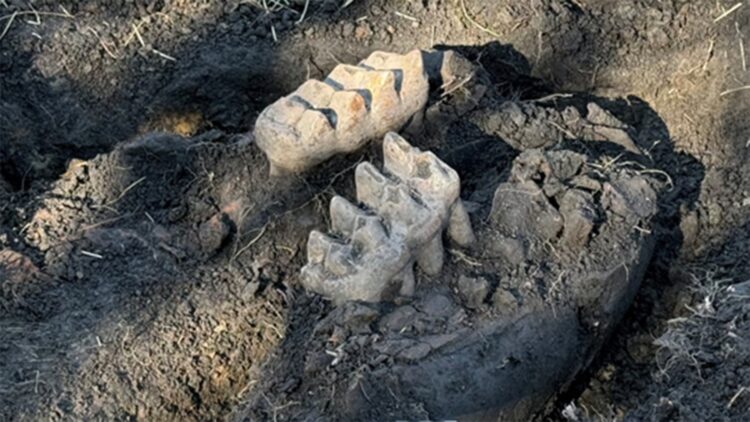A remarkable discovery has emerged from the mere backyard of a home in Scotchtown, New York: a complete mastodon jaw, along with several other bone fragments, is believed to date back approximately 13,000 years. This find is monumental, marking the first mastodon fossils uncovered in the state in over a decade. It also highlights the rich paleontological history of New York.
The discovery of mastodon fossils: A rare yet mammoth find
Earlier this year, a Scotchtown homeowner was gardening in his backyard when he stumbled upon what looked like two large teeth. Initially mistaking them for baseballs before recognizing their significance, he sought assistance from Dr. Cory Harris, an anthropologist at SUNY Orange in Middletown, New York.
Upon examining the teeth, Dr. Harris immediately identified them as mastodon fossils, prompting further investigation. Incredibly, the subsequent excavation led to the discovery of a complete adult mastodon jaw and additional bone fragments—including a toe bone and a rib—buried just a few inches below the surface of the yard.
This find marks the first complete mastodon jaw discovered in New York in 11 years, adding to the existing collection of over 150 mastodon fossils found throughout the northeastern state. Notably, about a third of these fossils have been discovered in Orange County, a region historically known as a hotspot for Ice Age relics.
“This discovery is a testament to the rich paleontological history of New York and the ongoing efforts to understand its past,” says Dr. Robert Feranec, curator of Ice Age animals at the New York State Museum.
These mastodon fossils will undergo carbon dating and detailed analysis to uncover insights into the ancient animal’s age, diet, and habitat.
What this discovery means for ongoing research
Part of the same order as mammoths and elephants, mastodons started inhabiting what’s now known as North America in the late Miocene Epoch, around 25 million years ago. They went extinct about 10,000 years ago.
The region’s geological history may explain why so many mastodon remains have been discovered there. Dr. Harris notes that the area was once a biologically rich environment formed by melting glaciers, attracting these large animals and later humans.
The recent discovery is especially exciting due to its shallow burial depth, making it one of the most accessible finds of its kind. The fossils were located in clay deposits formed during the Ice Age, an ideal preservation environment.
“While the jaw is the star of the show, the additional toe and rib fragments offer valuable context and the potential for additional research,” says Dr. Harris. “We are also hoping to further explore the immediate area to see if there are any additional bones that were preserved.”
Future research and public engagement
The mastodon jaw and other bone fragments will be featured in public programming scheduled for 2025, allowing the local community to engage with this immense find.
Dr. Harris expressed enthusiasm for the collaboration between the homeowners and academic institutions: “I think this has been a great example of teamwork… in the state that I’m proud to be part of.”
The state’s Education Department encourages the public to report any similar finds, as each discovery has the potential to shed light on the distant past and inspire future generations of scientists.
The discovery of the mastodon remains is an extraordinary testament to New York’s rich paleontological heritage. As researchers continue their investigations, they’ll uncover new insights about the Ice Age ecosystems and the majestic creatures that once roamed the land. This discovery not only boosts our knowledge of prehistoric life but also inspires curiosity about the natural history that lies beneath our feet.

